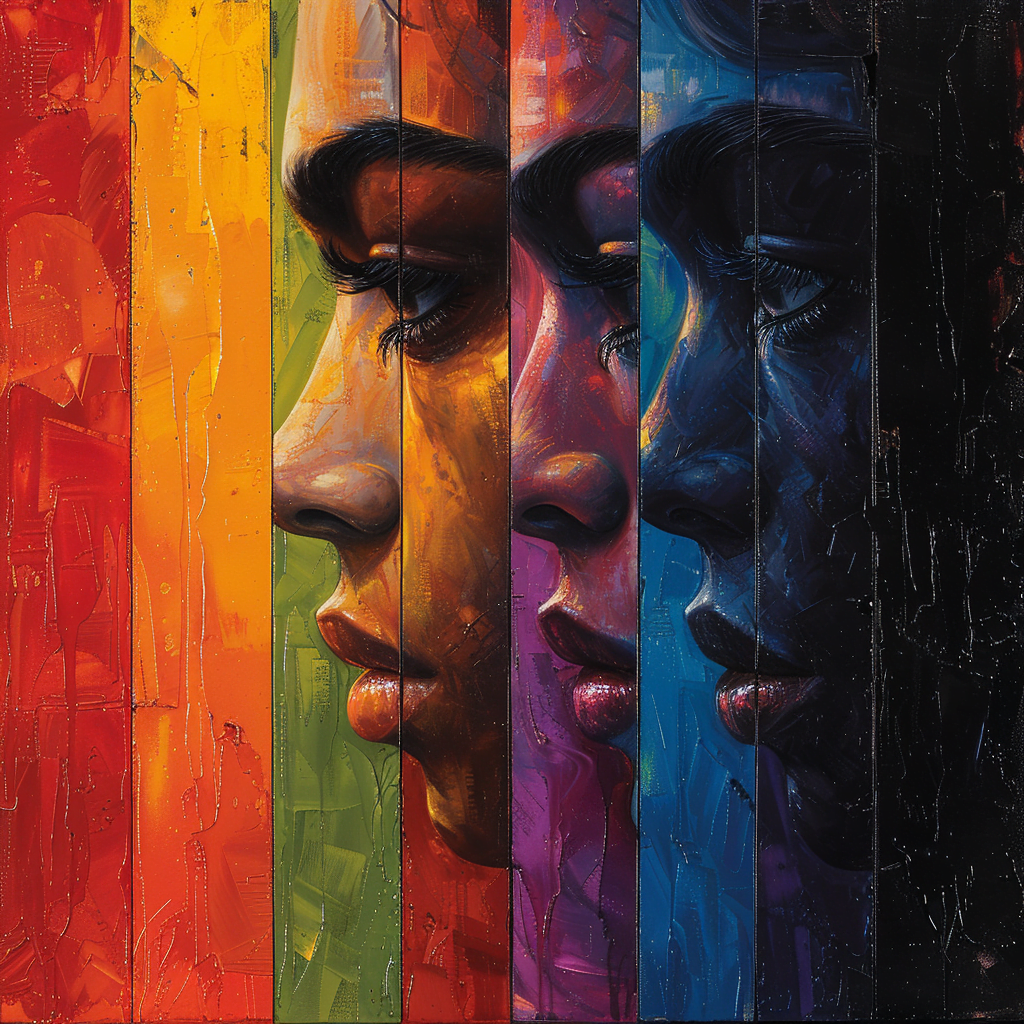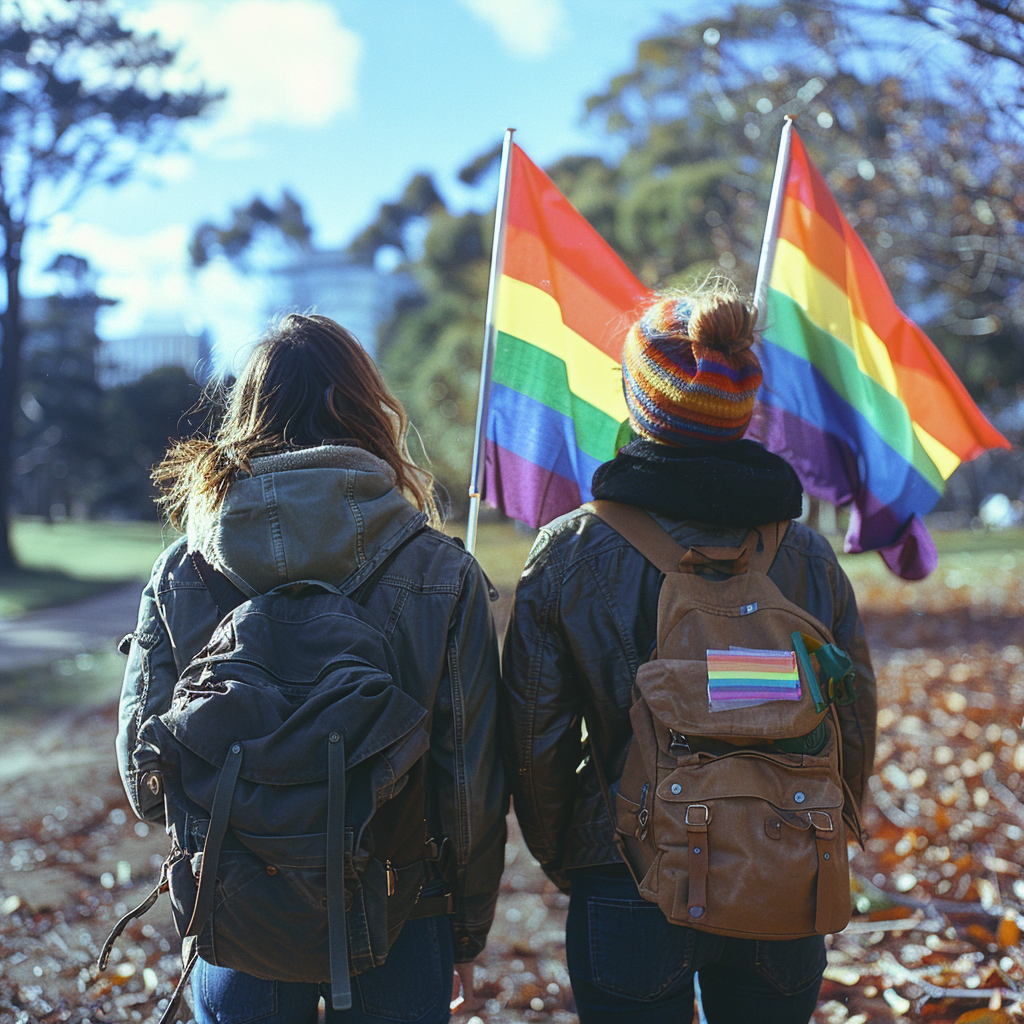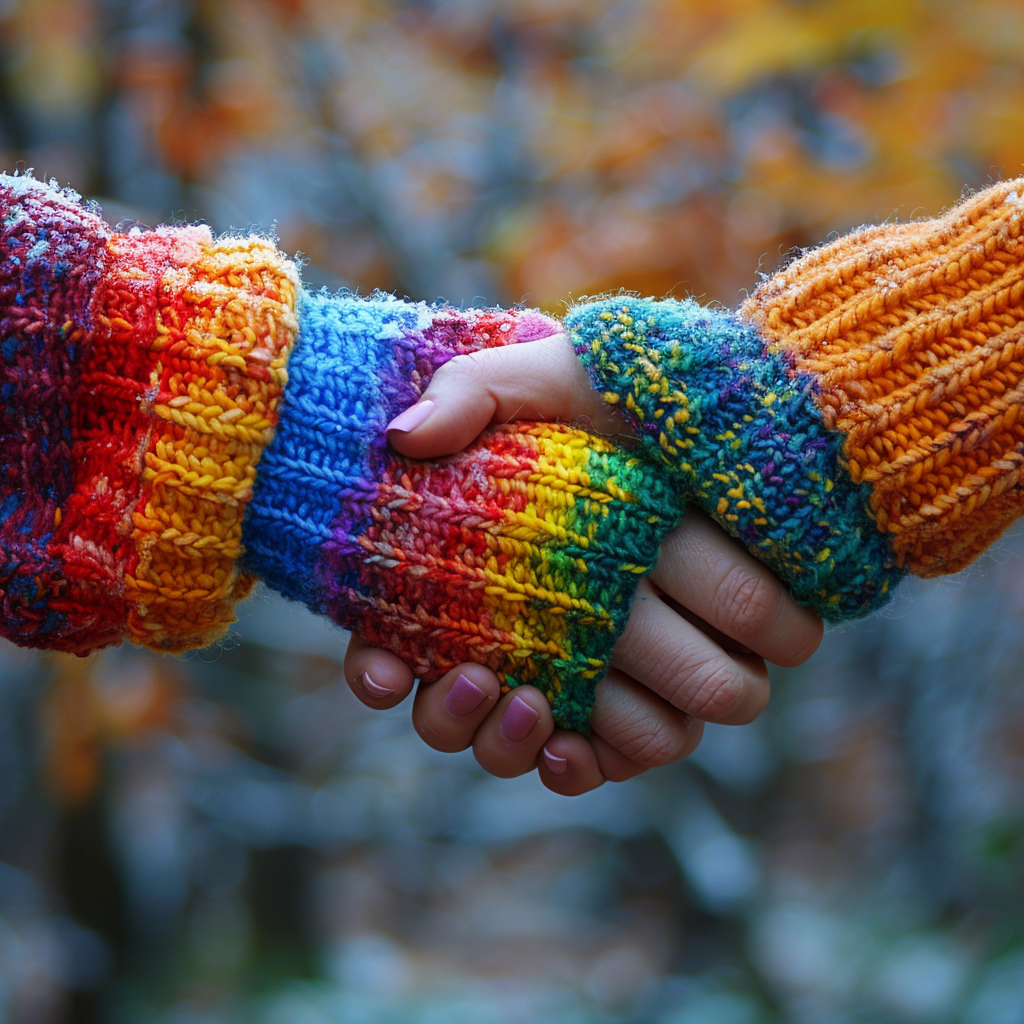Key Points
This is what you should consider if your boyfriend is gay:
- Changes in Actions: If you notice your boyfriend acting differently, taking up new interests, or hanging around different people in ways that seem more typical of someone who’s gay, it may be a hint about his sexuality.
- Who He Likes: Should your boyfriend consistently seem interested in men, either physically or emotionally, this could mean he’s gay or possibly bisexual.
- Talking It Out: The best method to figure out where your boyfriend stands is by having an open and sincere chat with him concerning his feelings and who he’s drawn to.
Contents
- 1 Key Points
- 2 Understanding Basic Concepts
- 3 Understanding the Role of Sexual Identity in Love Relationships
- 4 The Spectrum of Sexual Orientation
- 5 Common Misunderstandings About Sexual Orientation
- 6 Understanding Body Language and Feelings
- 7 Talking About Sexuality
- 8 How Society and Culture Affect Sexual Orientation Sharing
- 9 How to Have Open and Real Talks
- 10 Difficulties and Considerations When Talking About Sexual Orientation
- 11 The Importance of Trust and Being Open in Sex Talk
- 12 Help for Couples Dealing with Sexual Orientation Changes
- 13 Personal Growth and Relationship Development
- 14 Understanding Sexual Orientation in Relationships
- 15 Common Situations and Analysis Examples
- 16 Understanding Sexual Orientation and Relationships Through Reading
- 17 Support Groups and Counseling Services
- 18 Educational Programs and Workshops
Understanding Basic Concepts

To grasp the nuances of sexual orientation and what it means for personal connections, we need to be clear about a few fundamental ideas:
- Sexual Orientation – This term refers to who you find yourself attracted to, including emotionally, romantically, and physically.
- Heterosexuality – When a person finds those of a different gender attractive, we call it heterosexuality.
- Homosexuality – Someone who is drawn to people of their own gender is said to be homosexual.
- Bisexuality – A bisexual person is someone who feels attraction toward both males and females.
- Asexuality – An asexual individual might not feel sexual attraction towards any gender but can still have romantic relationships.
Understanding the Role of Sexual Identity in Love Relationships

Knowing and respecting sexual identity is essential for a strong love relationship. When partners understand and respect each other’s sexual orientations, they build a relationship filled with love, trust, and openness. This understanding also helps them handle differences in what they want and expect, working towards a satisfying bond that respects who they are.
Overlooking or getting someone’s sexual orientation wrong can cause misunderstandings and make people feel left out. On the flip side, when partners celebrate their sexual identities together, it leads to deeper connections and tighter relationships. Basically, paying attention to this part of someone’s identity in a relationship isn’t just nice—it’s vital for love that stands the test of time and stays true.
Grasping sexual orientation in relationships is crucial for creating a supportive and welcoming space for everyone. It means seeing and accepting the variety of feelings, attractions, and connections that people have toward others. Realizing these emotions are a deep part of a person can make us more understanding and empathetic towards one another.
The Spectrum of Sexual Orientation

Sexual orientation is more than just straight or gay; it spans a wide range. The spectrum covers being straight, gay, bisexual, and asexual, as well as less known kinds like pansexual and demisexual. These reveal the subtle ways people can feel attraction that doesn’t neatly fit into standard boxes. It’s important to recognize this diversity. It shows that attraction is unique to each person, and there’s no universal standard for who we fall for or like.
Common Misunderstandings About Sexual Orientation

Many folks get sexual orientation all wrong. Some think that a person can pick and choose their orientation or that it’s just a temporary thing, like it can be switched off or on. That’s not how it works. Then there’s the mix-up where people believe sexual orientation tells you someone’s gender identity. They’re mixing up apples and oranges, because being gay or straight has nothing to do with whether someone identifies as male, female, or anything else – they’re completely separate parts of who someone is. Acknowledging these slip-ups matters; we can’t put everyone in the same box, and we need to listen to each persons unique story.
Understanding Body Language and Feelings

When you’re trying to figure out someone’s sexual orientation, you might look for key behaviors and emotional signals. Pay attention to small things in how your partner acts or how they react emotionally. For example, see who they’re attracted to or who they like to be around. They might talk a lot about people of a certain gender or seem very interested in what these people do. They also may have close friendships with people of the same sex that seem deeper than with those of the opposite sex.
The way someone looks at others can give away some clues, too. Notice if your partner seems to focus more on people from one gender, especially when watching movies or TV shows. The way they behave around different genders can change as well. Look at how they use their hands when talking to friends; are they touchy or warm with those from a specific gender? Their response to LGBTQ+ topics, whether they seem really into it or kind of uneasy, can also tell you something.
Talking About Sexuality

The way couples talk about their thoughts and feelings can show us clues about their sexual orientation. Pay attention to how often they mention the topic in conversation; if they talk about it openly, it might mean they’re comfortable with who they are. Also, whether they joke about their sexuality or have serious chats, the way they put their ideas across can reveal what they really think.
Whether or not someone tells you their sexual orientation is also important. Some people just come out and say it, while others might drop hints or wait until they’re completely sure they’re safe before telling such private things. It’s important to understand that everyone has their own timing and way of sharing this part of their life.
How Society and Culture Affect Sexual Orientation Sharing

The way we express our sexual orientation often depends on the rules of society and the culture we come from. People may hide their true selves because they’re scared of being judged or pushed away. It’s important to think about where your partner grew up and what their life is like now.
Many cultures have strict rules that make it hard to talk openly about being different from the norm. This might lead someone to tone down who they really are, or even pretend to be something they’re not. Consider how your partner behaves in different situations: Are they different around their family or in certain social groups? These changes can show you the kind of pressures they might be feeling when it comes to showing who they are.
It’s crucial to pay attention to these details, because sexual orientation isn’t simple, it’s a deep and personal thing. To really understand how it plays out in your relationship, you need a caring and careful mindset that honors the path your partner has walked.
How to Have Open and Real Talks

It’s really important to talk about sexual orientation openly and truthfully in a relationship. You can begin the chat simply by sharing your own sexuality honestly or by asking your partner about theirs without making them feel judged. Try to find a chill time when you’re both relaxed, so the talk can happen calmly without any rush or distractions. Here are some tips to make these conversations smoother:
- Be straightforward but tactful; think about the words you use.
- Pay close attention and try to truly get what your partner is saying.
- Make sure you both feel it’s a safe place to share your thoughts and feelings.
- Use questions that don’t have a yes or no answer to get more out of the chat.
Difficulties and Considerations When Talking About Sexual Orientation

Discussing sexual orientation can be tricky because it’s a very private topic. People often worry about being judged, turned away, or making others uneasy, which can hold them back from being open. There’s also a chance that stereotypes or wrong ideas might affect the conversation. To handle this situation:
- Admit it’s a tough subject and promise to treat each other with respect.
- Be mindful of your own prejudices and don’t jump to conclusions about what your partner has been through.
- Understand that your partner’s background or community might impact how easy they find it to talk about these issues.
The Importance of Trust and Being Open in Sex Talk
Trusting each other and being open is key when you talk about sex. This kind of openness can lead to stronger bonds and a deeper understanding between people. It’s important to take it step by step and remember that it’s okay for these chats to develop slowly to lower the stress they might cause.
- Thank your partner for being brave enough to talk about such private stuff.
- Take your time and let the discussion happen naturally.
- Keep things between the two of you a secret and don’t judge to keep the trust strong.
Talking about who you’re attracted to takes thoughtfulness, patience, and an open mind. It isn’t just about speaking, but also about listening and making sure there’s a supportive space where both people can be their real selves.
When a person reveals their real sexual preferences, it can really change their close relationships. They might feel like they know themselves better and this can make the relationship stronger, or it can make things more complicated. If what a person thought was true about their preferences turns out to be different, it can shake up the relationship. Couples might have to talk about what they want emotionally, what they desire, and what they hope for in the future. As they go through these discoveries together, they might get closer and understand each other better. But if they want very different things or can’t adjust, it might cause conflict.
Dealing with Changes in How Relationships Work
When one partner figures out their sexual orientation, the way their relationship works tends to change. This could mean changing how they’re intimate or how they define their relationship so it fits who they really are. Some might go to couples therapy for help, or just have informal chats to find some agreement and think about how committed they are. This path could end with the couple sticking together with a new understanding of each other, or they might decide to split up with love if they can’t see eye to eye on their life plans and personal truths.
Help for Couples Dealing with Sexual Orientation Changes

When one person in a relationship learns something new about their sexual orientation, both partners have many places to turn for help. They can find local groups that give people a chance to talk to others in similar situations or see counselors who know a lot about sex and relationships. The internet is also full of helpful sites where people can read up on the topic, join discussions, or learn more about themselves. These resources can offer much-needed support and advice when a couple is going through changes, guiding them as they decide how to move forward together or apart.
Personal Growth and Relationship Development

As people change, they often grow, especially when in a relationship. It’s common for them to better understand how complicated humans are and to become more empathetic. Partners might grow together, making their relationship stronger; or they might grow apart, which usually leads to a break-up. Either way, they’ll move forward with more knowledge about themselves and a broader view of life.
Understanding Sexual Orientation in Relationships

It’s important to know what sexual orientation means when we’re talking about relationships that are good for us. It’s about getting that people can be attracted to different genders, and that’s okay. When we understand this, our relationships can grow stronger thanks to good communication, trust, and respect.
Common Situations and Analysis Examples

When it comes to relationships, there’s a whole range of issues that can pop up regarding who we’re attracted to. Some folks might notice their feelings about their sexuality changing as time goes on. Others could have always known deep down but didn’t tell their other half because they were scared or not sure how they’d take it.
Stories of Partners Discovering Their Sexuality
We hear stories about people who figure out they don’t quite fit the sexual orientation label they started with. Finding this out can be a big deal for them, and for the person they’re with too. Sometimes, someone might realize they’re interested in a gender they never thought about before. It can stir up all sorts of feelings and has to be handled with care.
How to Help Your Partner Explore Their Sexuality
It’s super important to be there for your partner when they’re figuring out their sexuality. Here’s a few things you can do:
- Affirmation: Let your partner know you hear them and support their right to figure things out. Don’t judge.
- Dialogue: Keep talking. Being able to chat about what you’re both feeling, scared of, or looking forward to can really bring you closer.
- Patience: Remember, this kind of thing doesn’t happen overnight. Give yourselves time to get used to what this means for each of you.
- Eduction: Learn more about sexual orientations so you can understand better and be ready for any bumps along the way.
- Support Systems: Push your partner to find friends, family members, or LGBTQ+ groups who get what they’re going through and can offer extra love and support.
With these approaches, you can create a space where both of you feel like you matter and are respected. Just bear in mind that everyone’s experience is different and taking your time is part of the deal.
Understanding Sexual Orientation and Relationships Through Reading

Diving into the topic of sexual orientation and its impact on relationships can be eye-opening when you read a selection of books and academic papers. These works take you from the basic theories right through to real-life stories that make the ideas more concrete. For example, Julie Sondra Decker’s book, “The Invisible Orientation: An Introduction to Asexuality,” gives readers an extensive look at an often-overlooked sexual orientation. Similarly, “Sexual Fluidity: Understanding Women’s Love and Desire” by Lisa M. Diamond explores the nuanced nature of women’s sexuality. In addition, academic journals overflow with new research that’s constantly updating our understanding of sexual orientation and its effect on our bonds with each other.
Support Groups and Counseling Services

Finding your way with sexual identity or dealing with relationship issues because of different orientations can be tough. Luckily, many support groups and counseling services exist to help out. Support groups are great for finding comfort and getting it that you’re not alone—places like LGBTQ+ centers are perfect for this. They give you a safe space to talk openly. Then there’s counseling, where pros who really get sexual orientation can guide personal development and help people or couples build better relationships through understanding and accepting each other.
Educational Programs and Workshops

We need to look for ways to learn about sexual orientation in personal relationships. Education programs and workshops can help turn confusion into understanding. They vary from college courses that talk about sex and gender psychology to local workshops run by activists and teachers. These aim to get rid of biases and encourage accepting and understanding others. When people join in, they learn how to support their friends and family, or they become more aware of their own feelings about sexual orientation.

I’m Kary Walters, a wedding planner and writer with a passion for helping couples stay together and achieve their relationship goals. With over a decade of experience, I specialize in self-improvement and have worked with individuals & couples facing challenges.